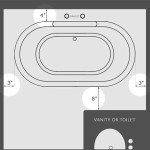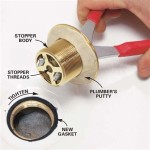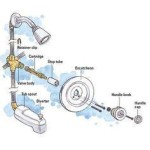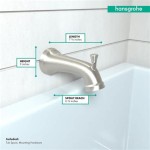Bathtub Grab Bars for Seniors: Enhancing Safety and Independence
Bathtubs can be hazardous for individuals with mobility limitations, particularly seniors. The slick surfaces, combined with the need to step over the tub wall, pose a significant risk of slips and falls. These falls can lead to serious injuries, including fractures, head trauma, and loss of independence. Installing bathtub grab bars is a crucial step in enhancing bathroom safety and allowing seniors to maintain their autonomy and personal hygiene.
Bathtub grab bars are safety devices designed to provide support and stability for individuals entering and exiting a bathtub. They are typically mounted to the wall or the side of the tub and offer a secure handhold, reducing the risk of falls. These bars are available in various styles, lengths, and materials to accommodate different needs and bathroom configurations. Proper installation and selection are paramount to ensure the grab bars effectively serve their intended purpose.
Understanding the Importance of Bathtub Grab Bars
The primary function of a bathtub grab bar is to prevent falls. Seniors often experience diminished strength, balance problems, and reduced mobility, making the simple act of stepping into or out of a tub a challenge. A grab bar offers a stable point of contact, allowing individuals to maintain their balance and control their movements. This is particularly important when the surfaces are wet and slippery.
Beyond fall prevention, grab bars offer psychological benefits. Seniors who feel secure in their bathroom are more likely to retain their independence and engage in self-care activities. The presence of grab bars can alleviate anxiety and fear of falling, promoting a greater sense of confidence and well-being. This, in turn, contributes to a higher quality of life and reduces reliance on caregivers.
Furthermore, installing grab bars is a proactive measure to prevent injuries and reduce the burden on healthcare systems. Falls are a leading cause of injury and hospitalization among seniors. By investing in safety devices like grab bars, individuals can minimize their risk of falls and the associated medical expenses. This preventative approach is both cost-effective and beneficial for overall health and longevity.
Types of Bathtub Grab Bars and Their Features
Several types of bathtub grab bars are available, each designed for specific purposes and mounting locations. Understanding the different options is crucial for selecting the most appropriate grab bars for a particular bathtub and user.
Wall-Mounted Grab Bars: These are the most common type of grab bar and are attached directly to the bathroom wall. They provide a stable and secure handhold and can be mounted horizontally, vertically, or diagonally, depending on the user's needs. Wall-mounted grab bars require proper installation to ensure they are securely anchored to the wall studs. The length and angle of the bar should be selected to provide optimal support and reach.
Tub-Mounted Grab Bars: These grab bars attach directly to the side of the bathtub, typically using clamps or suction cups. They are often portable and can be easily installed and removed. However, their stability may be less than that of wall-mounted grab bars. Tub-mounted grab bars are suitable for individuals who need temporary assistance or who are unable to install wall-mounted bars.
Suction Cup Grab Bars: These grab bars utilize suction cups to adhere to the bathtub or shower wall. They are quick and easy to install, requiring no tools or drilling. However, their holding power is limited, and they are generally not recommended for supporting significant weight. Suction cup grab bars are best suited for providing balance assistance rather than supporting the full weight of a person.
Floor-to-Ceiling Grab Bars: These grab bars extend from the floor to the ceiling, providing a long and stable support pole. They are particularly useful for individuals who need assistance with standing and sitting. Floor-to-ceiling grab bars can be installed in various locations around the bathtub to provide comprehensive support.
In addition to the different mounting styles, grab bars are available in a variety of materials, including stainless steel, chrome, and plastic. Stainless steel is a durable and rust-resistant option, while chrome offers a sleek and modern look. Plastic grab bars are often more affordable but may be less durable than metal options. The choice of material depends on personal preference and budget considerations.
Factors to Consider When Choosing and Installing Bathtub Grab Bars
Selecting the right bathtub grab bars and ensuring their proper installation is essential for maximizing their effectiveness and safety. Several factors should be considered during the selection and installation process.
User Needs and Mobility: The specific needs and mobility limitations of the user should be the primary consideration. Individuals with significant balance problems may require multiple grab bars in different locations. Those with limited upper body strength may need grab bars that are easy to grip and hold. Consulting with an occupational therapist can provide valuable insights into the user's needs and help determine the most appropriate grab bar configuration.
Bathroom Configuration and Space: The layout of the bathroom and the available space will influence the choice of grab bar style and placement. Consider the location of the bathtub, toilet, and other fixtures when determining where to install the grab bars. Ensure that the grab bars are positioned in a way that is accessible and convenient for the user.
Mounting Surface and Installation: The type of wall or tub surface will determine the appropriate mounting method. Wall-mounted grab bars require secure anchoring to wall studs to ensure stability. If wall studs are not conveniently located, additional blocking may be necessary. Tub-mounted grab bars should be securely clamped or suctioned to the tub surface. It is crucial to follow the manufacturer's instructions carefully during installation. If unsure, it is best to hire a qualified professional to install the grab bars.
Grab Bar Length and Diameter: The length and diameter of the grab bar should be appropriate for the user's hand size and reach. A grab bar that is too short may not provide adequate support, while one that is too long may be difficult to grip. The diameter of the grab bar should be comfortable for the user to hold. Typically, a diameter of 1.25 to 1.5 inches is recommended.
Grab Bar Finish and Texture: The finish and texture of the grab bar should provide a secure grip, even when wet. A knurled or textured surface can help prevent slipping. Avoid smooth or slippery finishes, such as polished chrome, which can be hazardous when wet.
Compliance with Building Codes and Accessibility Standards: In some jurisdictions, building codes and accessibility standards may specify requirements for grab bar placement and installation. It is important to comply with these regulations to ensure that the bathroom is safe and accessible for individuals with disabilities. Consult with a building inspector or accessibility specialist to determine the applicable requirements.
Regular Inspection and Maintenance: Bathtub grab bars should be regularly inspected to ensure they are securely mounted and in good working condition. Check for loose screws, cracks, or other signs of damage. Tighten any loose screws and replace any damaged components. Regularly clean the grab bars to remove soap scum and other debris that can make them slippery.
Properly installed and maintained bathtub grab bars can significantly improve bathroom safety and enhance the independence of seniors. By carefully considering the user's needs, bathroom configuration, and installation requirements, individuals can create a safer and more accessible bathing environment.
Beyond these considerations, it's important to remember that grab bars are just one component of a comprehensive bathroom safety plan. Other modifications, such as installing a shower chair, using non-slip mats, and improving lighting, can further enhance safety and reduce the risk of falls.
Moreover, consider the aesthetic integration of the grab bars. While functionality is paramount, choosing grab bars that complement the bathroom's existing décor can help to maintain a visually appealing and comfortable environment. Many manufacturers offer grab bars in a variety of finishes and styles to suit different design preferences.
Finally, it's advisable to consult with healthcare professionals, such as occupational therapists or physical therapists, for personalized recommendations on bathtub grab bar placement and other bathroom safety modifications. These professionals can assess an individual's specific needs and provide expert guidance to create a safe and supportive bathing environment that promotes independence and well-being.

Shower Grab Bar With 22 Inch Length Hand Rails For Elderly Strong Hold Suction Cup Handle Bathtubs And Showers Safety Bars Seniors Disability Assist Device Accessories Com

The Best Grab Bars A 2024 Guide Forbes Health

Glacier Bay 14 In Bathtub Rail Safety Grab Bar White Fgb204gb Thd The Home Depot

Vacu Grab Bars For Bathroom Shower Handicap Bar Safety Anti Slip Bath Grip Hand Rail Seniors Elderly 12 Suction Tub Com

Bathroom Grab Bars Purpose And Benefits For Seniors Step2health

Movecatcher 12 Inch Grab Bars For Bathroom Handicap Shower Safety Handle Handles Elderly Com

Grab Bars For Bathrooms Showers Tubs Lifeway Mobility

How To Modify The Bathroom And Tubs With Grab Bars For Seniors Senior Citizens Elders S

Were Should Bathtub Grab Bars Be Installed On Seniors Walls Aquasense

Wovilon Shower Handle 11 4 Inch Grab Bars For Bathtubs And Showers With Strong Hold Suction Cup Grip Bath Handicap Elderly Seniors Bathroom Safety Com








